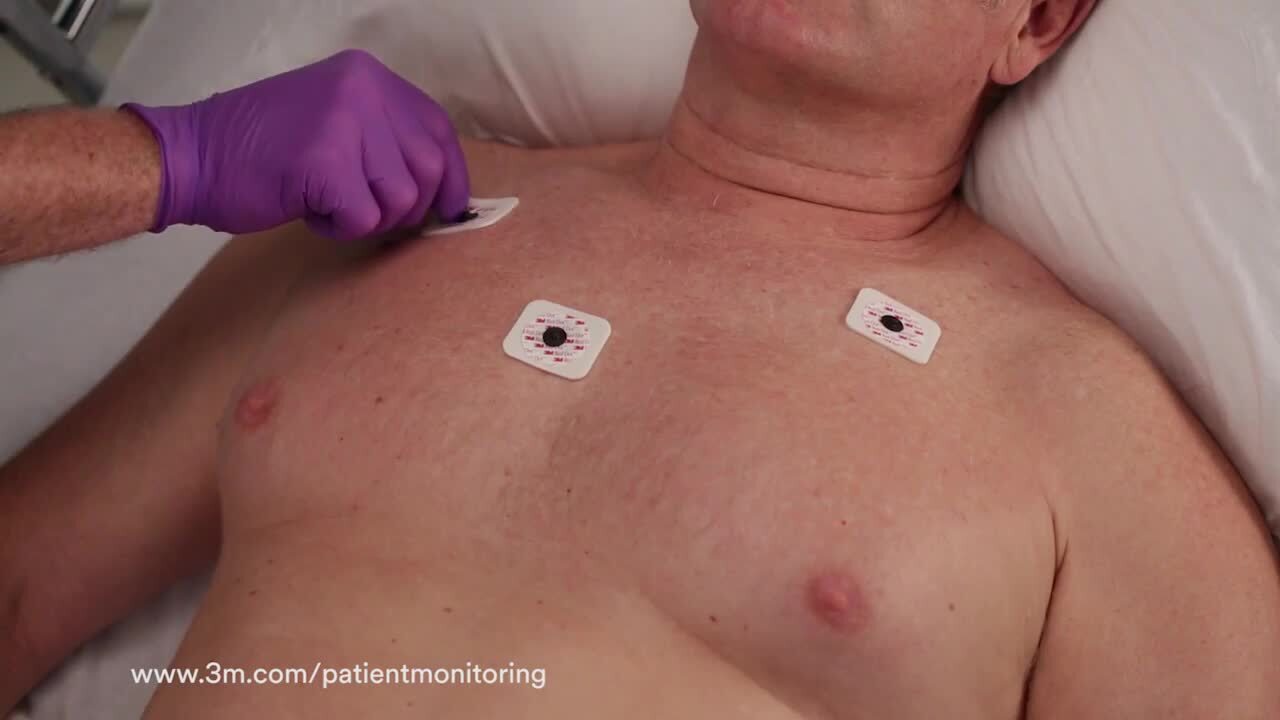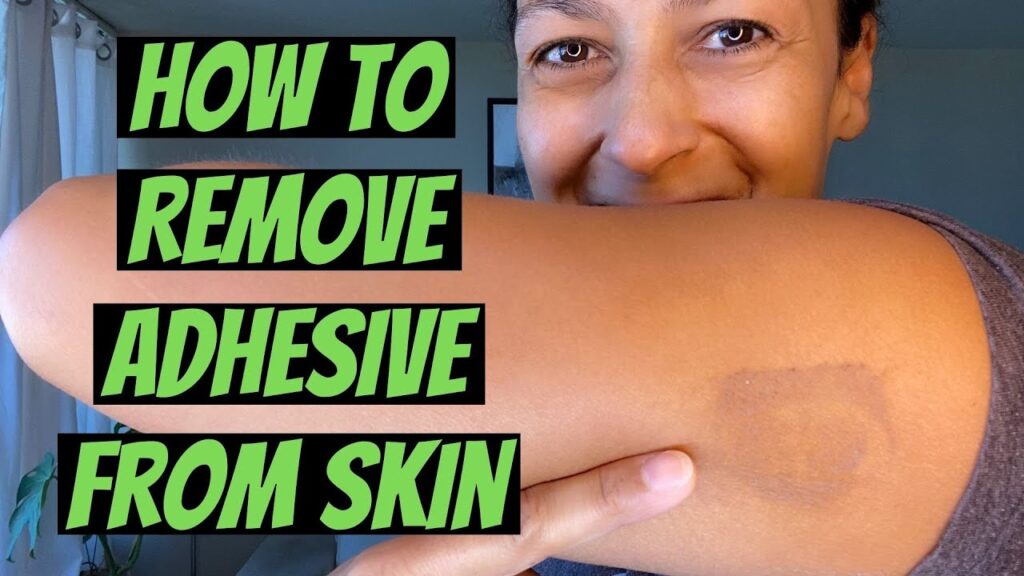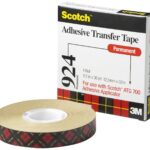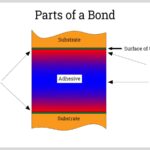Removing electrode adhesive from your skin can be a tricky task. The first step is to gently rub the area with a damp cloth. This will help remove any excess adhesive. You can also use oil or petroleum jelly to help loosen the adhesive. Rub the oil or petroleum jelly into the area and let it sit for a few minutes.
Once the adhesive has been softened, use tweezers to carefully peel away the adhesive from the skin. Be sure to use tweezers that do not have sharp edges. If the adhesive is still sticking to the skin, use an adhesive remover. You can find these products at most drug stores. Apply the remover to the area and let it sit for a few minutes. Then use a damp cloth to wipe away the adhesive. If the adhesive has caused any irritation, you may need to apply a skin cream or ointment to soothe the area. It may also be necessary to use a bandage to cover the area and keep it clean and dry. Removing adhesive from your skin can be a tedious task, but with the right steps you can be sure to get the job done without any pain.
How to remove heart monitor adhesive from skin

Removing electrode adhesive from the skin is usually necessary when the electrodes need to be replaced or when a person is done using a heart monitor. It’s important to remove the adhesive carefully in order to avoid any skin irritation. To remove the electrode adhesive, a person can first dampen a washcloth or cotton pad with warm water and gently rub the area. This will help to loosen the adhesive and make it easier to remove. Another method that can be used is to apply a bit of petroleum jelly or olive oil to the adhesive.
This will also help to loosen the adhesive, and make it easier to remove. Be sure to use a gentle circular motion when rubbing the area. After the adhesive has been removed, it’s important to use a mild soap and warm water to clean the area. This will help to reduce any skin irritation that may have occurred while removing the adhesive. Finally, it’s important to apply a moisturizing cream to the area to help keep it hydrated. This will help to prevent any further skin irritation and keep the skin healthy.
How do you remove the adhesive from a heart monitor?
Removing the adhesive from a heart monitor can be a tricky process. It is important to take your time and follow the instructions carefully in order to safely remove the adhesive without damaging your skin. Start by testing a small area near the adhesive to make sure your skin is not too sensitive to the adhesive remover you are using. This will help you determine the best approach and reduce any potential irritation. Then, use a soft cloth or cotton ball with a small amount of the adhesive remover to apply to the adhesive.
Gently rub the adhesive in a circular motion for a few minutes until it starts to loosen. Next, use a tweezer to carefully peel the adhesive away from your skin. Make sure to hold your skin taut to avoid any discomfort during this process. If the adhesive does not come off easily, repeat the process until it is fully removed. Finally, apply a moisturizer to the area to help soothe any redness or irritation caused by the removal process. Be sure to keep the skin hydrated and allow it to heal before applying another adhesive. Removing the adhesive from a heart monitor can be a delicate and time-consuming process, but following the proper steps can help ensure you have a comfortable and successful removal.
Is there any way to remove adhesive from skin after hospital?
Removing electrode adhesive from skin is possible, but it can be tricky. The adhesive is designed to last for a long period of time, so it takes a bit of effort to remove it completely. The easiest way to remove adhesive is to use a little soap and warm water. Soak a cotton ball in the water and gently rub the cotton over the adhesive. This will help to loosen the adhesive and make it easier to remove.
If you prefer to use a product, there are several commercially available adhesive removers that are designed to do the job. These products are usually available at drugstores or online. Be sure to follow the instructions on the product to avoid irritating the skin. If the adhesive is still difficult to remove, you may need to use an emery board to gently sand the adhesive off. Do this gently, as too much pressure can cause irritation or damage the skin. Once you have removed the adhesive, make sure to apply a good quality moisturizer to help soothe and protect the skin. Doing this will help to ensure that your skin stays healthy and comfortable.
What are the benefits of an EKG patch?
Removing electrode adhesive from skin can be done safely and effectively with the right tools and technique. The most important step is to apply a solvent to the adhesive, which will allow it to dissolve. It is also important to clean the area before and after removal to ensure all traces of the adhesive are removed. The benefits of an EKG patch are numerous. It can provide more accurate readings of heart rate, helping to diagnose conditions such as heart rhythm disturbances and abnormal electrical activity.
It can also help detect life-threatening cardiac events like cardiac arrest or myocardial infarction. In addition, an EKG patch is non-invasive, making it an ideal choice for monitoring cardiac activity. Furthermore, an EKG patch is easy to use and can be worn discreetly under clothing. This means the patient can move around and continue their daily activities without any disruption or discomfort. It also eliminates the need for cables and wires, which can be a hassle to manage. Finally, an EKG patch is generally considered to be very safe and effective for both short-term and long-term monitoring of heart activity. It is also relatively inexpensive, making it a cost-effective choice for monitoring cardiac health.
How do you feel about those sticky pads on the monitor?
Removing electrode adhesive from skin can be an unpleasant experience, especially when using the sticky pads that are found on the monitor. The adhesive is typically very strong and difficult to remove, which can be frustrating to those who are trying to do it. It can often cause irritations and cause discomfort on the skin. In order to remove the adhesive from skin, it is best to use a gentle solvent or oil to loosen it before attempting to pull it off. It is also important to be careful when attempting to remove the adhesive, as it can cause further damage to the skin if done too harshly.
The best way to prevent skin irritation and discomfort when removing electrode adhesive is to use the correct product and to follow the instructions on the packaging. It is also important to be gentle when removing the adhesive and to take extra care around sensitive areas of skin. Overall, it is important to be aware of the sticky pads that can be found on the monitor when trying to remove electrode adhesive from skin. While it can be an unpleasant experience, taking the right precautions and using the proper products can help to ensure that skin irritation and discomfort are kept to a minimum.






